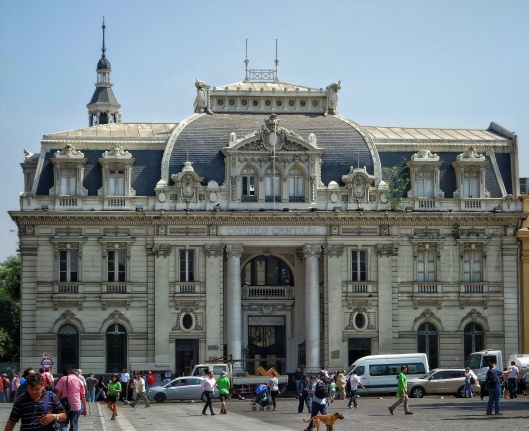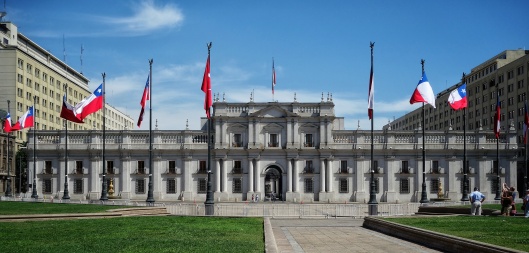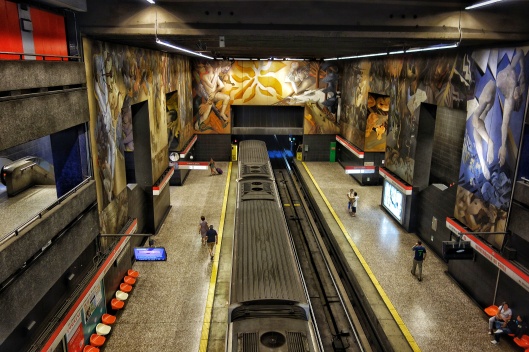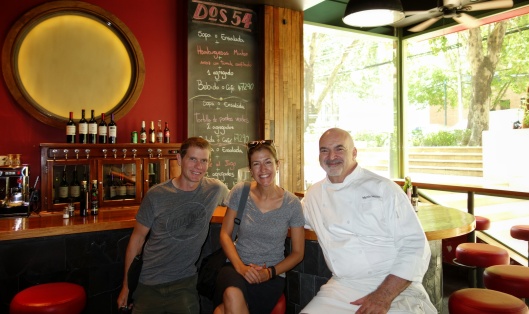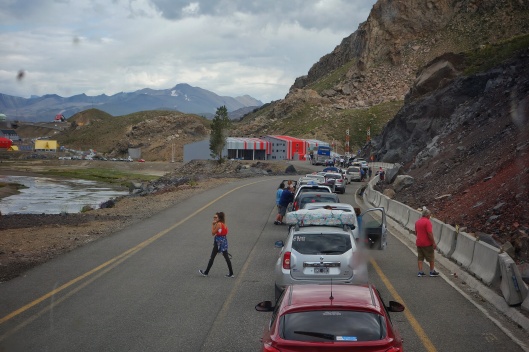The drive from San Martin de Los Andes to Pucon was another breathtaking ride. Looking out the bus window we were treated to either lakes, forests, or the towering Andes. We also had to cross Lanín National Park which offered us amazing views of the Lanín volcano. The volcanos in this region lived up the stories we had been told, that these volcanos were the epitome of what a volcano should look like. Perfectly shaped slopes, a complete cone, and light dusting of snow at the top.
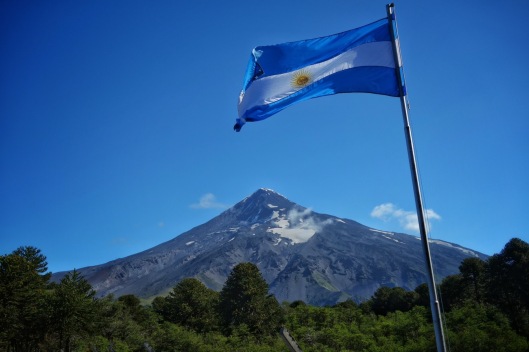
One of the most impressive border crossings in the world
To make the journey from San Martin de Los Andes to Pucon we had to cross the border from Argentina back into Chile. After our last 9 hour border crossing we were a bit weary of borders. This one, however, was a relative breeze. They had separate lines for buses and we were through both checkpoints within an hour.
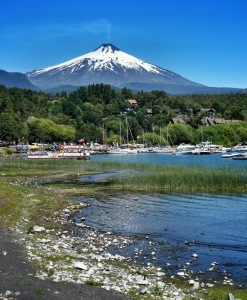 Pucon is the action sports capital of Chile, but we were hesitant to get too excited after seeing the prices for other activities in Chile and Argentina. When we went out to get some breakfast the first morning we saw signs for river rafting for $35. We said to each other that there were no way that these signs could be correct, or if they were it was for some really basic river with virtually no rapids. On our way back from breakfast we decided to ask at one of the tour companies, and it turned out that the price was correct and that it was for class 3-4 rapids. The reason that the prices were so low was that it was a half day trip, so the companies were able to get 2 trips per day on the river. We decided that this sounded like a great way to spent one of our days so we booked it for two days later.
Pucon is the action sports capital of Chile, but we were hesitant to get too excited after seeing the prices for other activities in Chile and Argentina. When we went out to get some breakfast the first morning we saw signs for river rafting for $35. We said to each other that there were no way that these signs could be correct, or if they were it was for some really basic river with virtually no rapids. On our way back from breakfast we decided to ask at one of the tour companies, and it turned out that the price was correct and that it was for class 3-4 rapids. The reason that the prices were so low was that it was a half day trip, so the companies were able to get 2 trips per day on the river. We decided that this sounded like a great way to spent one of our days so we booked it for two days later.
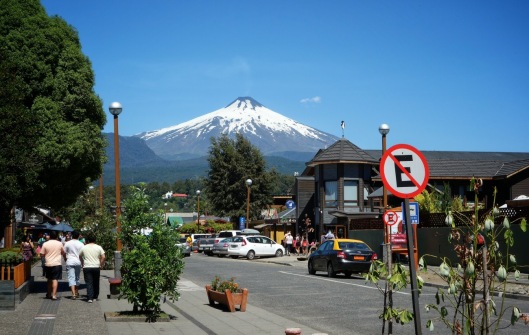
Pucon with the iconic Volcano Villarica framing the town
The presence of volcanos throughout the Lake District in Chile meant the area was full of natural hot springs. We asked the nice lady who ran our hostal if she knew of the prices and if she had any suggestions of which of the many springs to go to. She told us it depended completely on our preference, that the hot springs ranged from high end resorts to rustic natural pools. We decided as long as they had hot water and weren’t too expensive we would be happy. She referred us to one of her favorite spots, about 45 minutes outside of town and explained how to get there on a bus. We decided to go to the hot springs the next day and go rafting the day after that.
The one piece of advice that the woman who ran the hostal gave to us was don’t leave Pucon before 10 am and don’t come back between 7 and 9 pm. We were still at the tail end of peak season and the two lane roads surrounding the town tended to get very congested causing a 45 minute drive to take hours. We waited until early afternoon to leave for the hot springs so we made decent time getting there. We were excited to sit and soak in the hot water after a few very long bus rides. When we bought our tickets to enter a guide told us that the pools ranged in temperature getting progressively warmer as you went down the hill, with the exception of the first pool which was the hottest. We decided to try them in order from coolest to hottest to find the one that suited us the best. The first pool was slightly warm but definitely not hot so we decided to bypass it and continue to the second pool. The second, third and fourth pools turned out to be almost the same temperature, which is to say, not particularly hot. At this point we were slightly concerned, but hopeful that the last pool would be quite a bit warmer than the others. As luck would have it this pool was gloriously warm and we spent our entire time at the hot springs in that one pool.
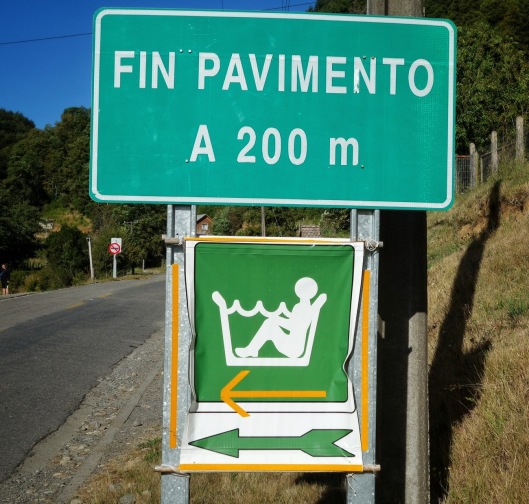
Our favorite hot springs sign. Fortunately the actual hot spring was more comfortable than depicted on the sign
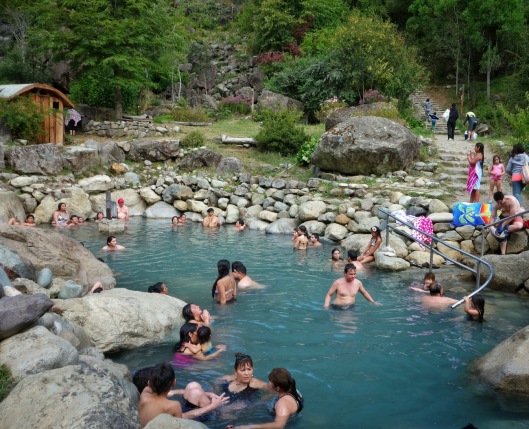
After several hours of relaxation we changed back into our clothes and headed out to the road to catch the bus. We had carefully planned our departure so that it would get us back to town before the evening congestion picked up. Unfortunately, the bus to take us back to Pucon was about a half hour late to arrive, and it was so full that we ended up having to stand. Normally this would not be a big deal but this bus ended up being jammed to capacity and by the time we got to the main road to Pucon traffic was at a standstill. Our driver decided that it would be better for us to turn around and take some country dirt roads and bypass much of the congestion. We ended up driving for over an hour on the dirt roads and ultimately picked up the main road very close to town. We aren’t sure in the end how much time we saved, but we both agreed we would rather be driving out of the way than sitting in traffic that wasn’t moving.
The next day we were very excited to go white water rafting, which we hadn’t done since our adventures in Costa Rica. The tour company promised us two small waterfalls and some exciting class 4+ rapids on our trip. After a short shuttle ride from town we were dropped off at a camp site to get our gear and meet our rafting guides. After a few changes of gear (we were both given wet suites that did not fit us) we piled back into the shuttle to head a few miles up the road to where we would enter the river. Here we divided the 36 passengers into 6 groups with their respective guides. Our guide turned out to be a Colorado native who has worked on rivers all over the Americas. It was a good thing that our guide was experienced because other than us, nobody in our raft had ever gone white water rafting before. Normally most people don’t choose their first rafting trip on rivers with class 4+ rapids, but the company didn’t stop them so there we were. On our first rapid our guide quickly learned that this was going to be interesting as everyone other than the two of us stopped paddling when we hit the rapid. For those of you who haven’t gone rafting before it would be like driving your car through a forest but taking your hands off the steering wheel. We managed not to flip the boat or get stuck on any rocks and after the rapid the guide took some extra time to explain how to paddle in rapids, and the importance of doing so. All in all we had a great time rafting down the river and managed not to have any major incidents. We think our guide may have been a little more stressed than he would normally have been but he was still making jokes as we went so we think he had a good time as well.
From Pucon we planned to stop into another lake town called Villarica and explore for half a day before getting on another bus to go to our next destination: Puerto Montt. Unfortunately, when we arrived into Villarica and found the other bus terminal (the one we arrived to did not have service to Puerto Montt) we were told that there were no seats available to Puerto Montt that day. As we discussed what to do, the bus ticket agent informed us that we could get a bus to Osorno (a town a few hours out of the way) and then from there catch another bus that would take us to Puerto Montt. The only downside was that the extra connection and going out of our way meant that if we wanted to get to Puerto Montt before it got too late we would need to take the next bus to Osorno, which left much sooner than we anticipated. We decided we really didn’t have any other options so we booked our tickets, then went for a quick walk to explore the town and see the lake before getting on our bus and continuing on our way to Puerto Montt.
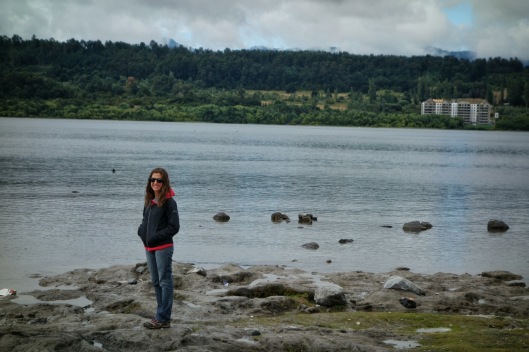
 All told the trip to Puerto Montt from Pucon should take us about 12 hours, which even with the added detour is not too bad for us veteran bus travelers.
All told the trip to Puerto Montt from Pucon should take us about 12 hours, which even with the added detour is not too bad for us veteran bus travelers.

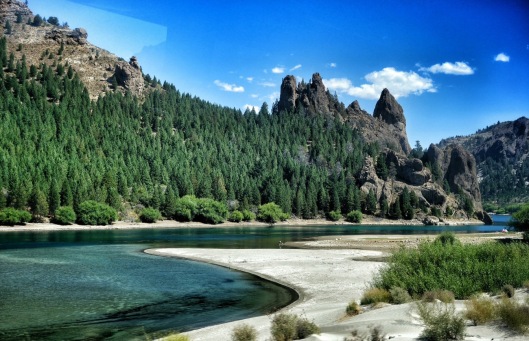
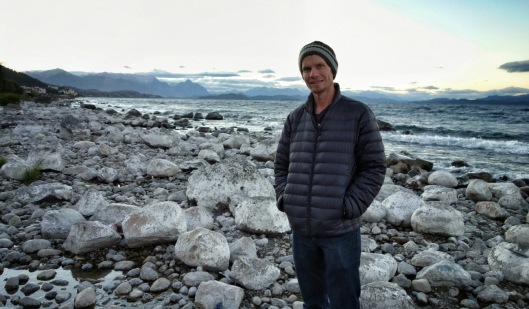
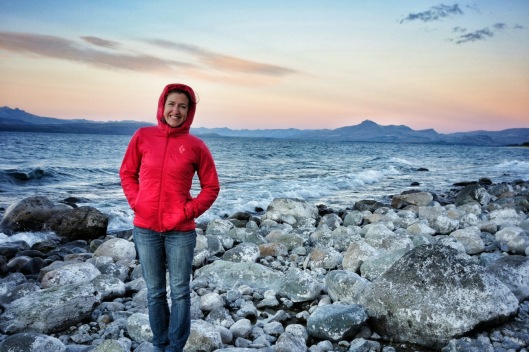
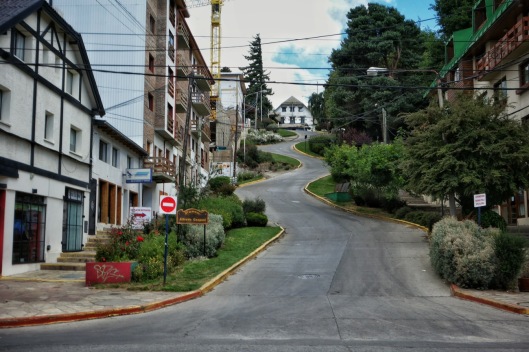
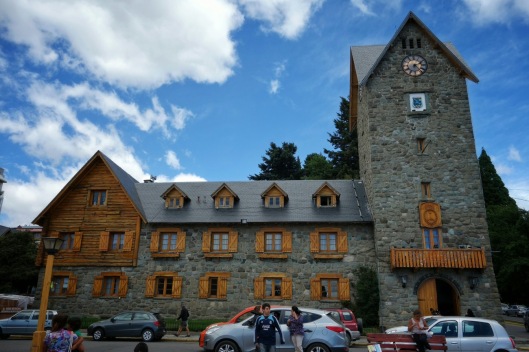
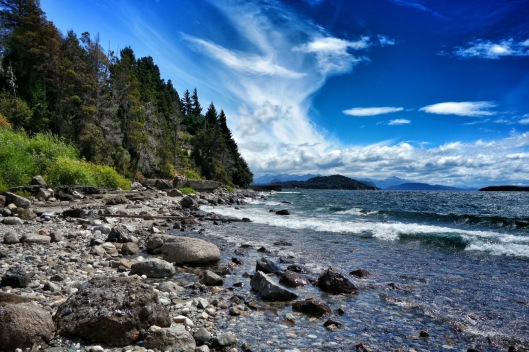
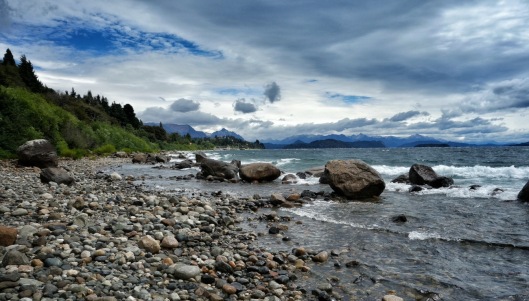
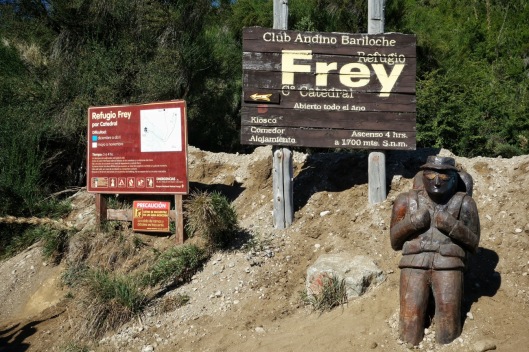
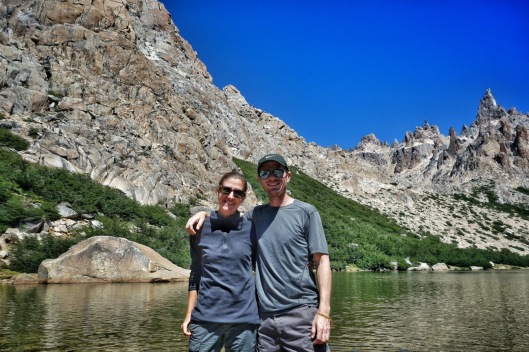
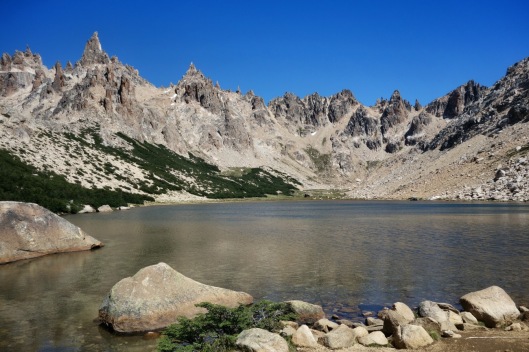
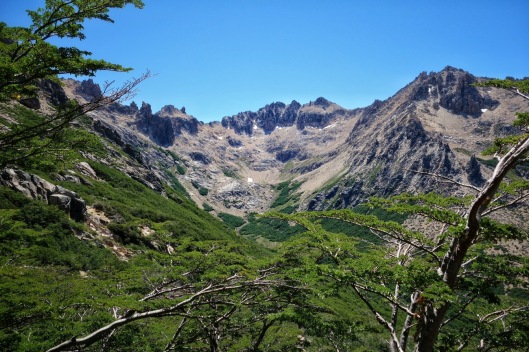

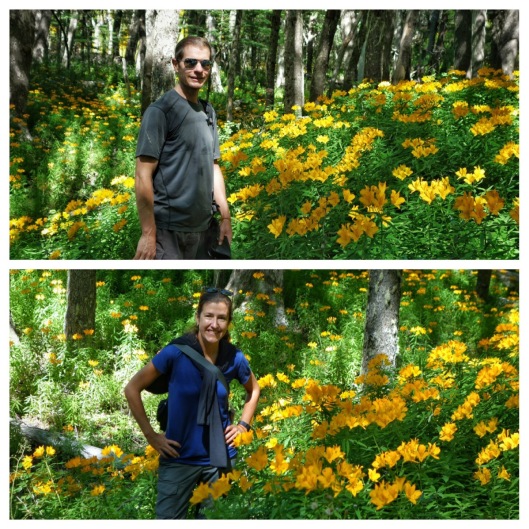
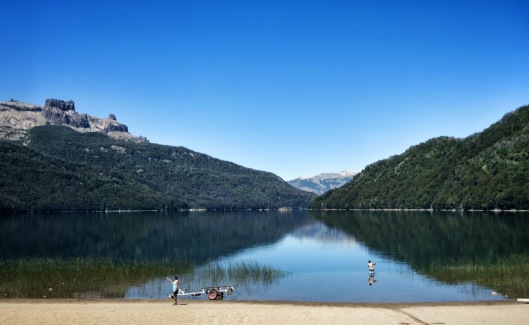
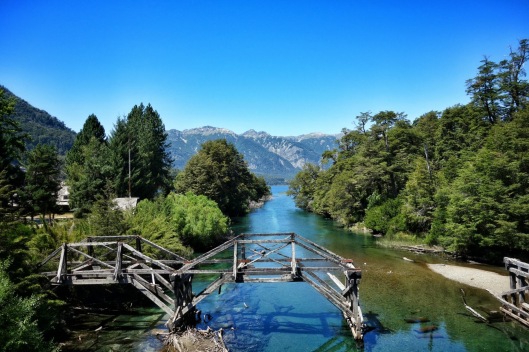 We could have filled an entire blog post with just pictures of the beautiful scenery from our bus ride along the seven lakes drive
We could have filled an entire blog post with just pictures of the beautiful scenery from our bus ride along the seven lakes drive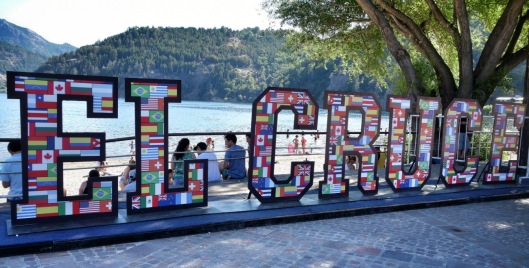
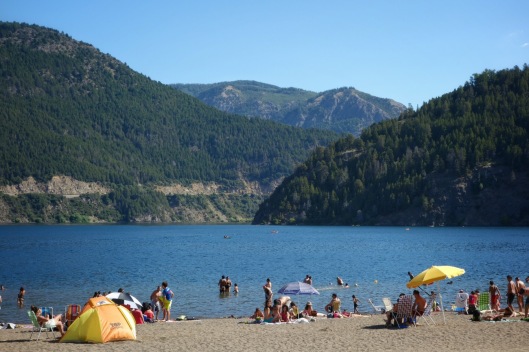
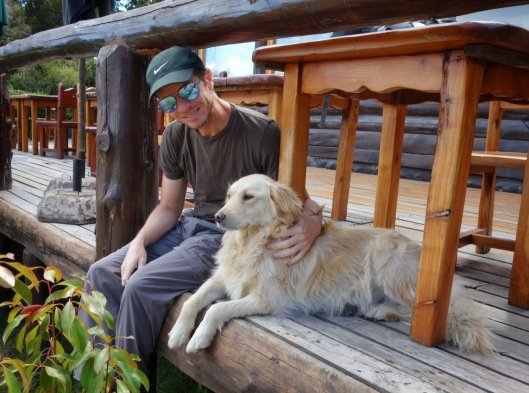
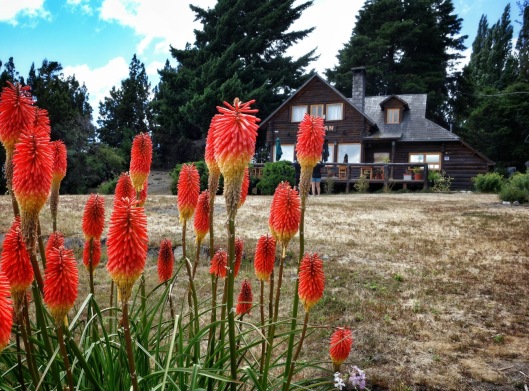

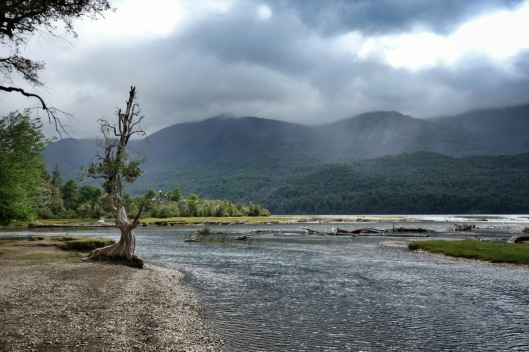
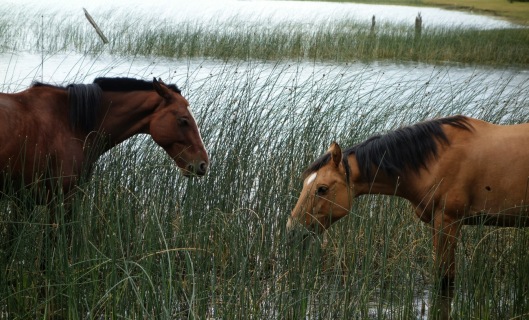
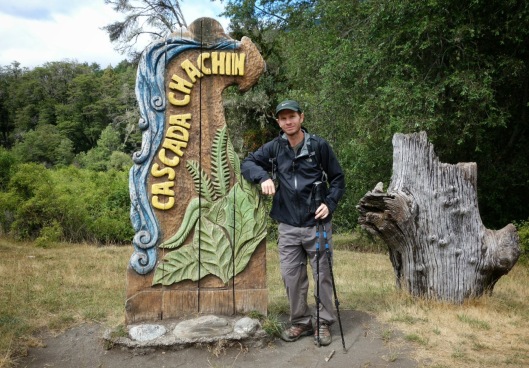
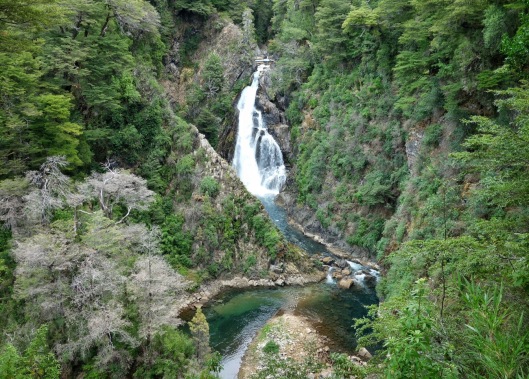
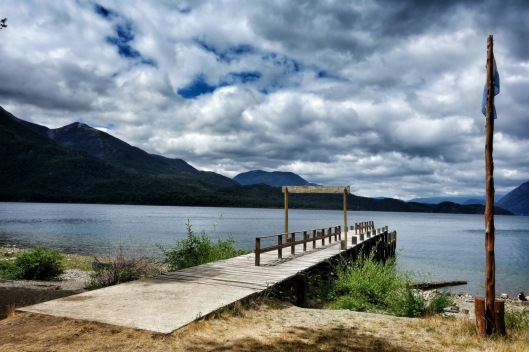
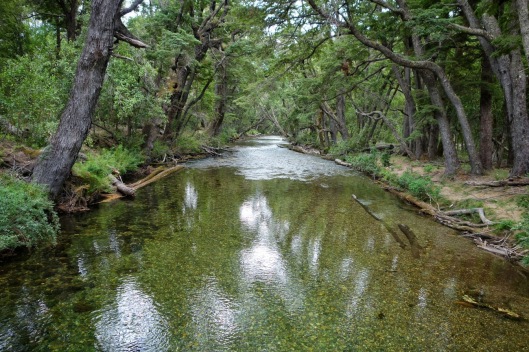
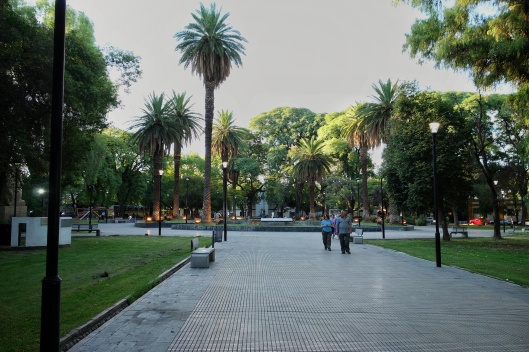
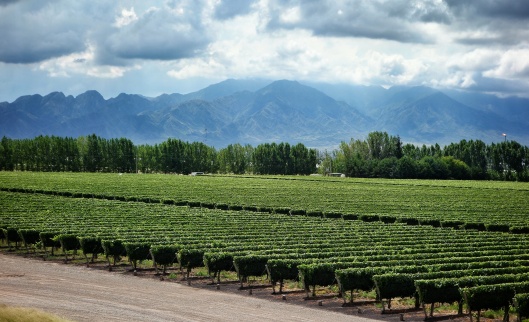
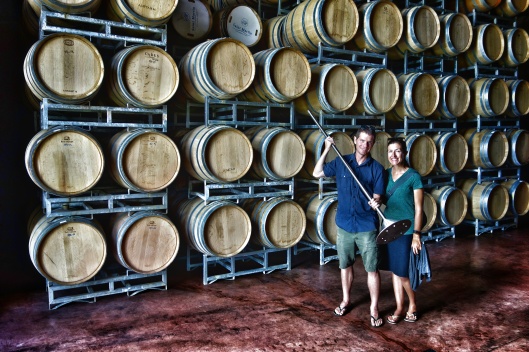
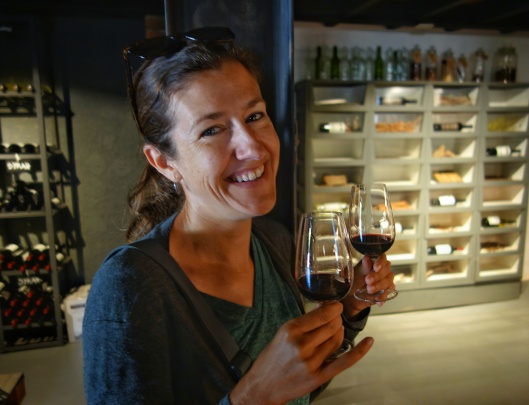
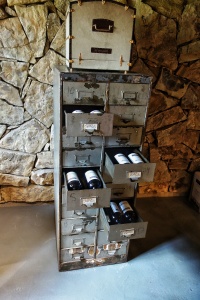 The next day we took the wine bus to a slightly different section of wineries. We were provided with a list of winery stops, what each winery was known for, what you could taste, and the cost of the tasting fee. We could choose 4 stops, giving us around an hour to and hour and a half at each location. Several of the locations also offer gourmet meals with beautiful views of the Argentian country side. We, however, have not been traveling on a gourmet budget. Because we are trying to make our money stretch over an 8 month timeframe we decided to bring a picnic. Unfortunately, the wineries were not excited about their guests having a picnic and not partaking in their gourmet cuisine. Our guides informed us that we would have to ride back to Mendoza in the bus, have our lunch there, then ride back with the afternoon wine tour. Our guide was very apologetic and told us that it was out of his hands. We had our bread and avocado on a park bench in Mendoza before visiting the two afternoon winery stops. The wineries we chose to visit were: Dominio del Plata, Terrazas, Septima, and Penedo Borges.
The next day we took the wine bus to a slightly different section of wineries. We were provided with a list of winery stops, what each winery was known for, what you could taste, and the cost of the tasting fee. We could choose 4 stops, giving us around an hour to and hour and a half at each location. Several of the locations also offer gourmet meals with beautiful views of the Argentian country side. We, however, have not been traveling on a gourmet budget. Because we are trying to make our money stretch over an 8 month timeframe we decided to bring a picnic. Unfortunately, the wineries were not excited about their guests having a picnic and not partaking in their gourmet cuisine. Our guides informed us that we would have to ride back to Mendoza in the bus, have our lunch there, then ride back with the afternoon wine tour. Our guide was very apologetic and told us that it was out of his hands. We had our bread and avocado on a park bench in Mendoza before visiting the two afternoon winery stops. The wineries we chose to visit were: Dominio del Plata, Terrazas, Septima, and Penedo Borges.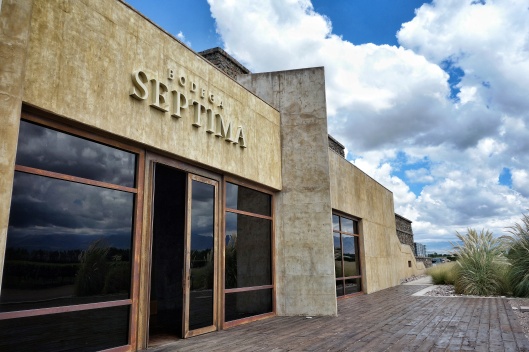
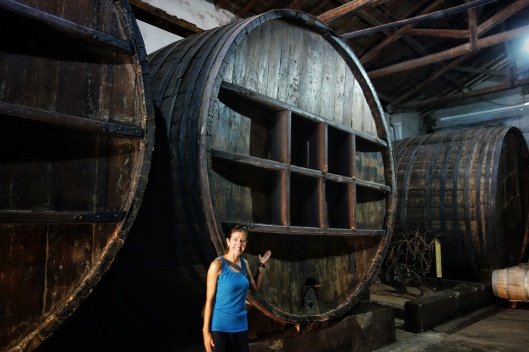
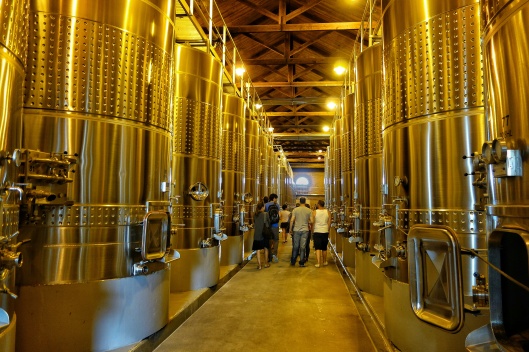
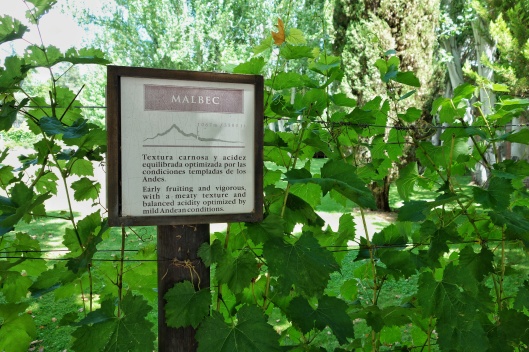
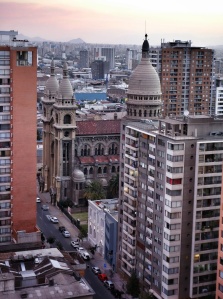 Santiago is a city of 5.1 million people. It has wide sidewalks, many walking streets, an efficient subway system, countless parks, museums, sculpture gardens, and outdoor cafes. We rented a small studio apartment just south of downtown that had a rooftop terrace with an amazing view. We spent our days in Santiago walking around taking in all the sites from the city. We would set out with a single destination and end up walking for hours because there were so many interesting things to see.
Santiago is a city of 5.1 million people. It has wide sidewalks, many walking streets, an efficient subway system, countless parks, museums, sculpture gardens, and outdoor cafes. We rented a small studio apartment just south of downtown that had a rooftop terrace with an amazing view. We spent our days in Santiago walking around taking in all the sites from the city. We would set out with a single destination and end up walking for hours because there were so many interesting things to see.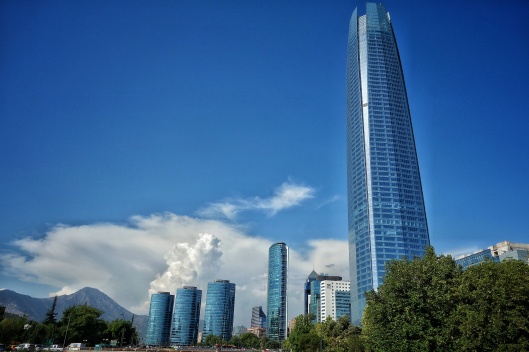
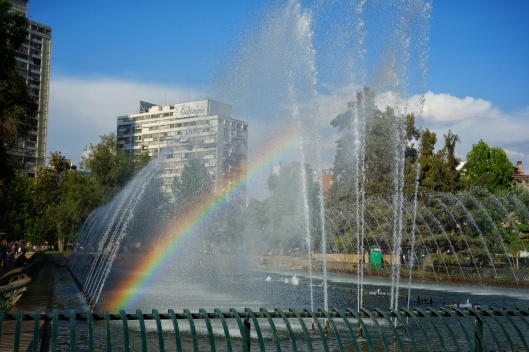

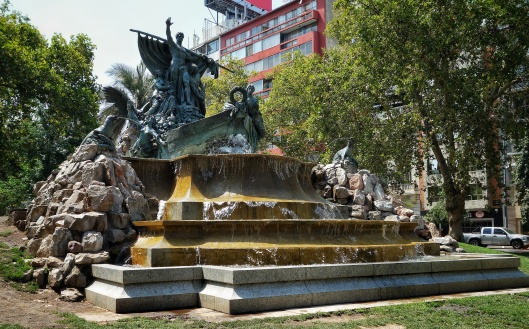




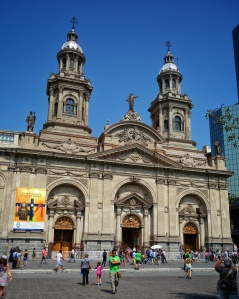 We took a walking tour that highlighted many of the buildings and historical events that have shaped Chile into the country it is today. Our young and passionate guide showed us her favorite pieces of public art, painted on buildings and the walls of the subway stations. She took us to buildings that had been transformed from symbols of a harsh dictatorship to cultural centers and museums.
We took a walking tour that highlighted many of the buildings and historical events that have shaped Chile into the country it is today. Our young and passionate guide showed us her favorite pieces of public art, painted on buildings and the walls of the subway stations. She took us to buildings that had been transformed from symbols of a harsh dictatorship to cultural centers and museums.